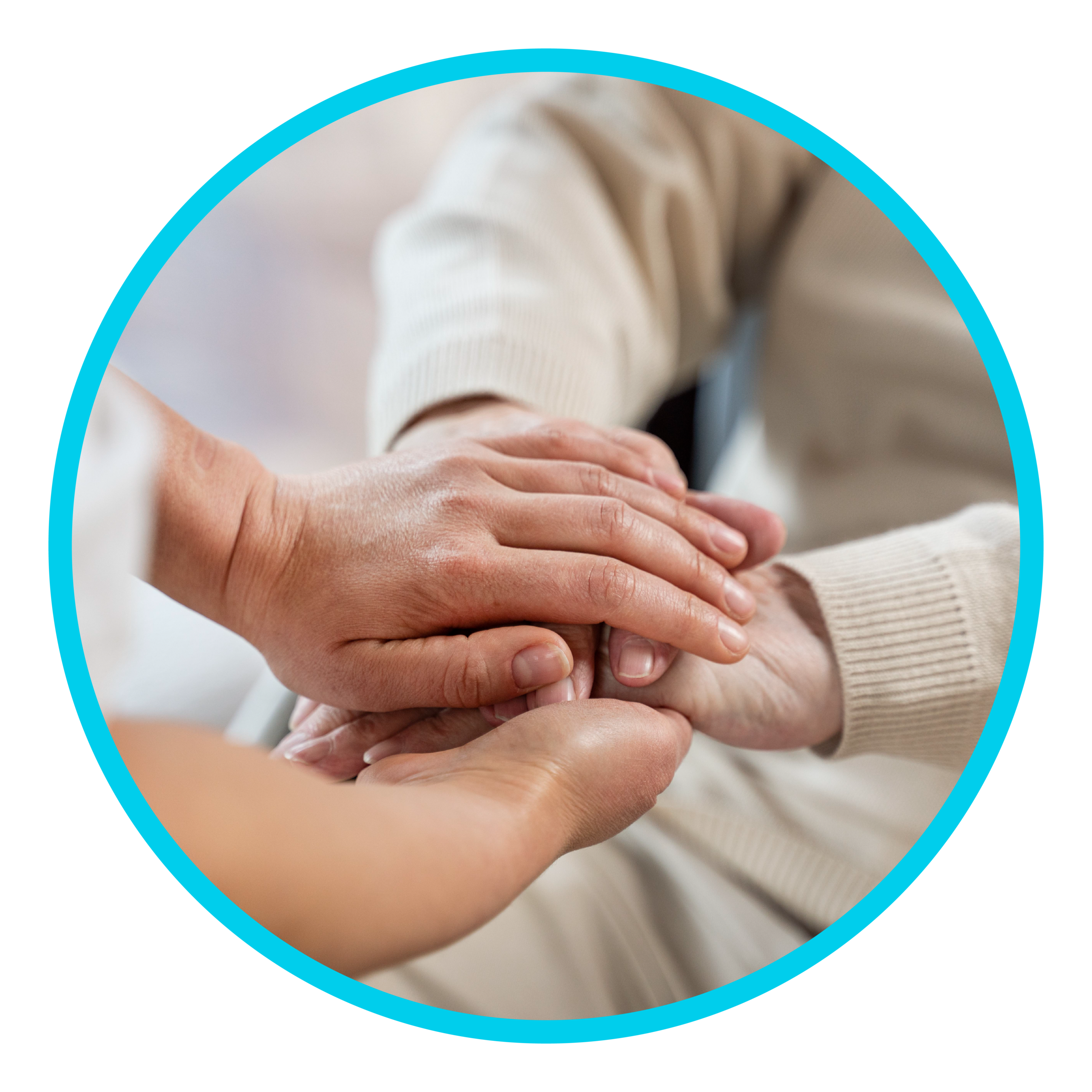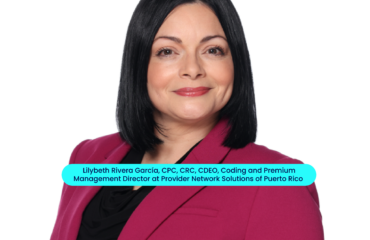This post is also available in:
 Español (Spanish)
Español (Spanish)
By: Vilmar Trinta Negrón | Interview by Dr. Eddie Ortiz
You can watch the full interview here: Transforming Geriatric Care: A Patient-Centered Approach Based on the 5 M’s
 The aging population in Puerto Rico continues to accelerate, presenting an urgent challenge for healthcare professionals: delivering care that is more focused, comprehensive, and aligned with the true priorities of older adults. In response to this need, the 5 M’s of Geriatrics model emerges as an essential guide to structuring clinical care with purpose and sensitivity.
The aging population in Puerto Rico continues to accelerate, presenting an urgent challenge for healthcare professionals: delivering care that is more focused, comprehensive, and aligned with the true priorities of older adults. In response to this need, the 5 M’s of Geriatrics model emerges as an essential guide to structuring clinical care with purpose and sensitivity.
This framework, developed by leaders in geriatric medicine in collaboration with the Institute for Healthcare Improvement and the Friendly Health System movement in the United States, proposes five key areas that should be considered in every clinical interaction with older adults: Mind, Mobility, Medications, Multicomplexity, and what Matters Most. Its goal is clear: to ensure care that supports functionality, minimizes risks, and centers on what truly matters to each person.
In this edition of Clinical Dialogue, Dr. Eddie Ortiz (EO), Chief Strategy and Clinical Officer of Provider PR, speaks with Dr. Richard M. De Andino Lorenzón (RDA), family physician, geriatrician, and professor in the Geriatrics Fellowship Program at the University of Puerto Rico Medical Sciences Campus. Together, they explore how this approach can be implemented in daily practice in Puerto Rico, also addressing the impact of social determinants of health on modern geriatric care.
▶ RDA: The 5 M’s of Geriatrics is a method for training professionals to understand the multidimensionality of the aging patient. This patient carries such a medical burden that it can overwhelm the professional, so we must be organized to prioritize and effectively manage their care.
▶ EO: How did you become familiar with the 5 M’s, and what do they mean for the primary care physician?
▶ RDA: The concept arose within geriatric medical education as a way to bring structure, since many issues older patients face aren’t necessarily medical—they’re social, mobility-related, medication-related—and all of these can lead to serious medical problems. We began looking for a way to organize it, and this framework was a breakthrough, especially with the shift to value-based care. Previously it was fee-for-service, now we’re required to show outcomes. When unfamiliar patients arrived, meeting the metrics demanded by insurers was difficult. The 5 M’s help us work across different dimensions, maximizing our time, resources, and ensuring the patient feels well cared for.
▶ EO: In many areas, this concept intersects with something now widely recognized—even by regulatory agencies: the social determinants of health. How do we integrate this into our assessments? I was fortunate to train in a Family Medicine program that emphasized geriatrics and social determinants from the start. Let’s begin with the first M: Mind.
▶ RDA: We’re working with people who may have mild cognitive impairment, so it’s important to be clear, ensure they understand instructions, take medications properly, and complete labs. If not, we must assist them. Provide written instructions, because there comes a time when they forget conversations or don’t understand. If no one is helping them carry out our treatment plan, it’s ineffective. It’s not just about giving a prescription and saying, “Come back in three weeks.” We must repeat, ensure they understood, and confirm compliance at the next visit.
▶ EO: There are tools to assess a patient’s mental state.
▶ RDA: That’s right. We can conduct screening tests, like the Montreal Cognitive Assessment, which helps detect mild cognitive impairment. In my case, I knew many patients from my community, so I noticed signs without formal testing and would follow up by phone—“Did you understand what I told you?” Now patients may not be from your community, and you might be assigned 20 or 30 patients to your risk panel—you have to work fast. There’s also the Mini-Cog, a quick three-question test to identify memory challenges.
▶ EO: Sometimes poor adherence to therapy or recommendations stems from memory issues. We must assess this and find support tools—family members, written aids. Now let’s move to the second M: Multicomplexity.
▶ RDA: Many patients already have multiple conditions. In Puerto Rico, metabolic syndrome is common—diabetes, obesity, hyperlipidemia—they arrive with these. The issue is they’re on many medications. I tell my students: good pediatrics is good geriatrics. Don’t wait until you’re 65 to change your diet and lifestyle—start at 30 or 40. We’re facing a tsunami of diabetes. If patients end up on dialysis, we’ll face a serious economic and social crisis. There are also social challenges—families have moved away, and older adults often live alone. Sometimes older adults are caring for other older adults. I’ve had to treat both the caregiver and the patient, to prevent caregiver burnout.
Caregivers have been in the news, and insurers are beginning to address caregiver health because their role is invaluable. Many seniors live alone. This is not a medical issue, but a social one. We must face it.
Hospitals face the burden of patients who are abandoned. Who pays that bill—insurance? Hospitals are in crisis. Society needs to calmly come together and find solutions. Neighborhoods are vanishing, communities are left unsupported. It’s not the same living in Condado as in Gurabo or Loíza. Support systems vary greatly by location.
▶ EO: You’ve touched on two areas I’ve focused on for years: urban versus rural disparities, access issues in mountainous regions versus metro zones. This ties to Mobility, another M, and also connects with family and social support. But continuing with multicomplexity, let’s move to Medications and the challenges with therapy.
▶ RDA: Many of our patients are taking numerous medications. According to studies conducted in Gurabo, patients were taking between five and seven prescribed medications, plus three they were self-medicating with from the pharmacy—essentially totaling around ten medications. The current trend is to analyze this and determine which ones to deprescribe.
 You can discontinue medications; for example, at certain stages in life, you may question why a 95-year-old is still taking cholesterol medication. Has the patient had a stroke? Is the medication necessary for that? If not, and it’s for primary prevention, then it should be reassessed. Certain diabetes medications—oral hypoglycemics—are not recommended for older adults because they significantly lower blood sugar levels. Deprescribing or repurposing medications is key. For instance, we sometimes prescribe antidepressants like trazodone to aid sleep instead of using medications like Ativan or Ambien, which should be avoided.
You can discontinue medications; for example, at certain stages in life, you may question why a 95-year-old is still taking cholesterol medication. Has the patient had a stroke? Is the medication necessary for that? If not, and it’s for primary prevention, then it should be reassessed. Certain diabetes medications—oral hypoglycemics—are not recommended for older adults because they significantly lower blood sugar levels. Deprescribing or repurposing medications is key. For instance, we sometimes prescribe antidepressants like trazodone to aid sleep instead of using medications like Ativan or Ambien, which should be avoided.
A thorough polypharmacy review is essential to determine if we can remove two or three medications that may no longer be necessary. As people age, their pharmacodynamics change. The way a medication affects me now is not the same as when I was 50. The body changes—fewer receptors, less lean mass, less muscle, and more fat. A medication that previously caused no harm might now be harmful without the patient realizing it, especially if they believe it’s safe because they’ve been taking it for 20 years. That needs to be explored.
We must reevaluate how the body processes medication—how it’s metabolized by the liver, distributed by the body, and excreted by the kidneys. If kidney function declines with age, even small doses can result in higher concentrations of the drug in the body. This is a major challenge because many older patients insist that a medication cannot be the cause of their symptoms since they’ve used it for decades. I’ve seen this with blood pressure medications, specifically ACE inhibitors, where a patient requests an MRI. Sometimes, discontinuing the medication resolves the issue—saving the patient an $800 test.
▶ EO: Now that I’m caring for my elderly relatives, my sisters and I reconcile their medications nearly once a week. But sometimes mistakes happen—they mix up pill bottles. I often think this reflects a social determinant: loneliness and lack of social support. How are these patients, who are on multiple medications, managing this? That’s why we see so many visits to emergency rooms and hospitals—either because they stop taking medications they actually need, or they take medications prescribed to them years ago that they still have on hand, which may still have an effect or cause adverse reactions.
We always review medications that should not be used under certain conditions, and we assess drug interactions within this population. As the number of medications increases, we risk making errors—either by omission or because we’re unaware that a drug was prescribed. The prescription may have originated from an emergency room visit, outside our control as primary care providers, or from a hospitalization we weren’t informed of. By the time patients return to us, we’re tasked with reconciling everything, often uncovering numerous potential issues.
It’s a complex matter—one that requires significant attention. The regulation, the well-known Medication Reconciliation Program post-discharge, exists for a reason. I have colleagues who mention how many administrative requirements there are, but reconciliation is essential. There are even specific billing codes for it, and we must document that the process was completed.
Beyond that, we must educate families to support this reconciliation—by talking about it, staying alert—yet despite this, medications still get mixed up. It’s a tangible, daily reality.
Another “M” is Mobility, which is not only about assessing whether the patient can move but also about everything that exists outside the home—including access to healthcare services.
▶ RDA: Mobility in older adults refers to their ability to carry out activities of daily living—both personal and instrumental. The first sign of concern often appears in instrumental tasks, such as being able to go from home to the grocery store independently, driving a car, taking the bus, or still having the ability to call an Uber. Another aspect is whether they can prepare meals—if they live alone, can they cook safely without risk in the kitchen? Can they take their medications independently? These are considered instrumental activities.
Then there are personal activities, and when those begin to decline, care must become significantly more intensive—what some might call “full court press” in basketball terms. This includes situations where the individual cannot get up from a chair without assistance, cannot bathe alone, or needs someone to feed them—at that point, the person likely requires closer palliative care.
Often, patients insist they can still perform these activities, but subtle signs begin to reveal mobility challenges. You should ask, “How did you get to my office today?” Observe whether they can use a phone, which can be a real challenge due to its complexity. If the patient has family, they should monitor the situation. If not, the physician should speak directly with the patient and explain: “We are entering a new stage of life.”
▶ EO: One of the first things I notice is transportation. Addressing this social determinant of health has been a major achievement. I believe this is one of the jurisdictions that most effectively utilizes that service, which is highly valuable to patients—not because it’s a luxury, but because it’s a necessity. Another issue is family emigration. Many patients are already on the edge of frailty. If they tip into dependence, who is there to support them?
We see clear barriers to accessing healthcare services. In rural areas, this creates significant challenges. It’s not the same as in metropolitan areas, where there is access to AMA or possibly Uber. In rural zones, the dynamic is more complex. These are barriers and disparities we encounter every day as physicians.
This “M” is particularly interesting because it touches on preferences and how we recognize an older person’s decision-making capacity—it’s about what matters most (Matter Most).
▶ RDA: As you get to know the older patient better, you begin to understand what truly matters to them. There may be a bucket list—a graduation, for instance—and they want to be there. Some things are deeply important, and it’s not always about prolonging life, but about quality of life. Let’s take chemotherapy as an example. A patient is diagnosed with cancer, and you’re planning to start chemotherapy, so you must explain the potential side effects. If the patient is 95 years old and says, “Doctor, just keep me comfortable and pain-free, because living like this is not important to me,” that must be respected.
Take a hernia surgery, for example. At a certain age, the person might say, “It looks bad, it bothers me, but I’m not in crisis. If you put me in a hospital bed, I don’t have anyone at home to take care of me. Can I live with the hernia?” Yes, if it’s reducible, then let’s wait and monitor. “I prefer to leave it alone because I’m comfortable this way.”
There are also cases involving medications the patient can’t afford. The plan might only cover 50%, and they’ll say, “Doctor, find me something less effective that still works, but I can’t afford this.” You must be sensitive to that. Your professional ethics might tell you it’s the best medication, but if it’s financially burdensome and causing issues elsewhere, you have to adapt.
One area is vaccination. I used to recommend them—I have eight COVID vaccines myself—but over time, the side effects became very unpleasant for some older patients. They didn’t feel well afterward. So, I had to negotiate—wash your hands frequently and follow other precautions.
▶ EO: What are the greatest challenges you see in your patient population?
▶ RDA: When we began practicing geriatrics in 1985, only 8% of the population was over 65. We never expected this tsunami—now we’re at 20 to 25%. We didn’t foresee that children and grandchildren would leave. I see a lot of loneliness, many patients alone, struggling to reach the office even in the metropolitan area. Medication dispensing and treatment get delayed when there is no caregiver. The support system is strained—that’s the major challenge I’m seeing.
I serve a population in Isla Verde, affluent and with many resources, and even they face difficulties. Caregivers are charging $6,000 a month for 24/7 service in the metro area—if you can even find one. Long-term care has become a challenge. I’m trying to send many of these patients to live with their children in the United States, and it breaks my heart—they don’t want to go. They tell me, “I’m fine; I’m not leaving.” That struggle—between someone who wants to die on their island and you trying to send them away to be with their family—that breaks your heart.
Ultimately, it is a privilege to care for patients, especially older adults. Don’t be afraid of these complex situations. They have wonderful stories to share, so listen to them, make them talk. It has always been a privilege to care for them, to enjoy practicing medicine alongside them, even with today’s challenges—like filling out the 1111F form. It’s been quite a shift for someone who began in independent medical practice. But as I tell my residents: you have to learn, unlearn, and relearn. We are in a time of change.
This post is also available in:
 Español (Spanish)
Español (Spanish)








